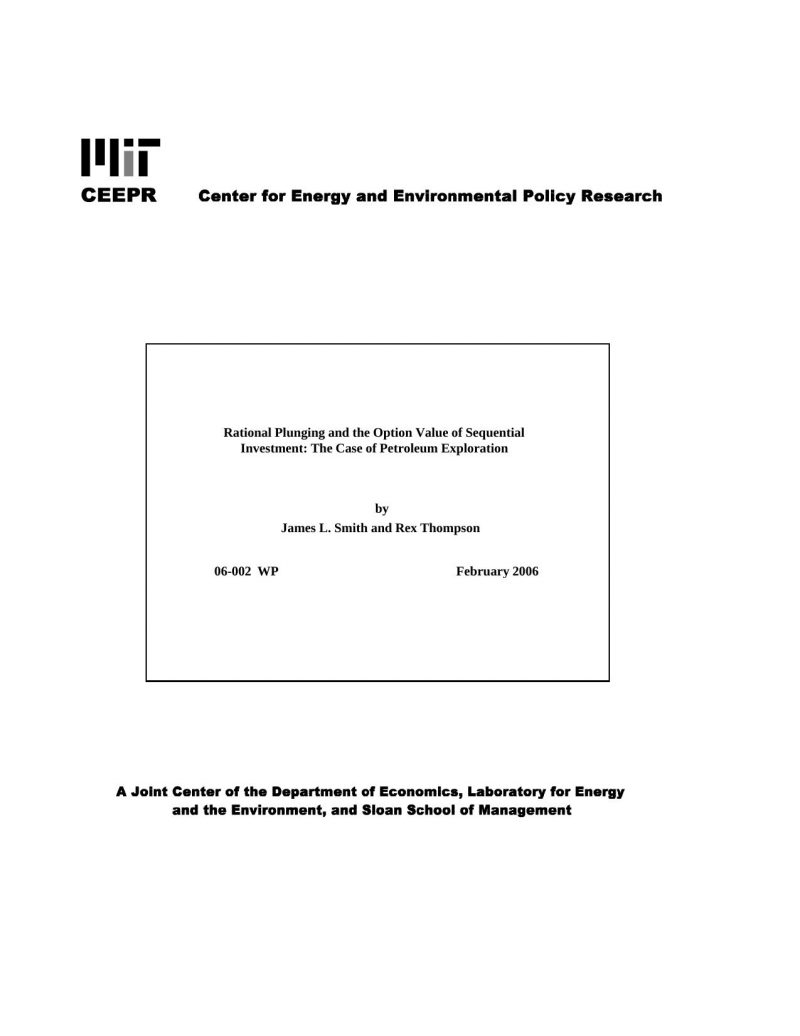Rational Plunging and the Option Value of Sequential Investment: The Case of Petroleum Exploration
James L. Smith and Rex Thompson
06-Feb
Any investor in assets that can be exploited sequentially faces a tradeoff between diversification and concentration. Loading a portfolio with correlated assets has the potential to inflate variance, but also creates information spillovers and real options that may augment total return and mitigate variance. The task of optimal portfolio design is therefore to strike an appropriate balance between diversification and concentration. We examine this tradeoff in the context of petroleum exploration. Using a simple model of geological dependence, we show that the value of learning options creates incentives for explorationists to plunge into dependence; i.e., to assemble portfolios of highly correlated exploration prospects. Risk-neutral and risk-averse investors are distinguished not by the plunging phenomenon, but by the threshold level of dependence that triggers such behavior. Aversion to risk does not imply aversion to dependence. Indeed the potential to plunge may be larger for risk-averse investors than for risk-neutral investors. To test the empirical validity of our theory, we examine the concentration of bids tendered in petroleum lease sales. We find that higher levels of risk aversion are associated with a revealed preference for more highly concentrated (i.e., less diversified) portfolios.



